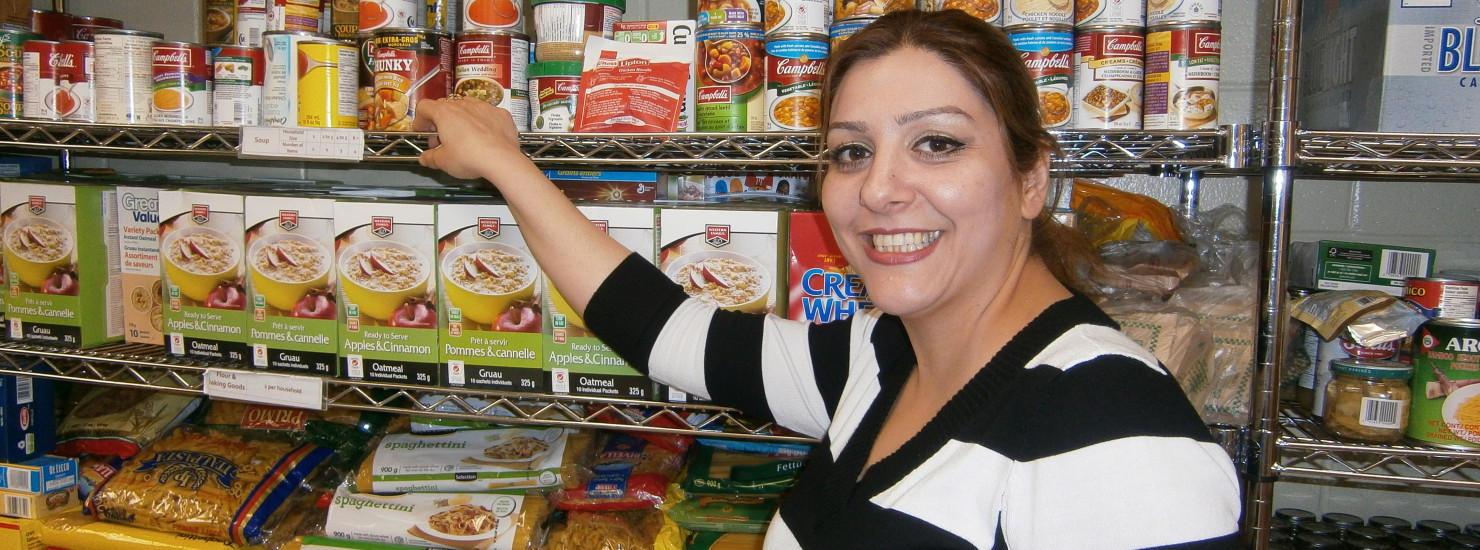Comments Off on Why Food Banks are Choosing Choice.
This might sound a little strange, but I really like going grocery shopping. I know that the parking lots can be crazy, and the check-out lines can be long, but I find the whole experience strangely soothing. Seriously! Like most people I have my own little routine. Essentials first; milk, veggies, eggs, bread, juice, and then depending on how I’m feeling, I’ll move onto something more adventurous; maybe a nice curry for dinner, a catch of the day fish, or some ingredients for baking. It might not seem like a big thing in the moment, but you have to admit, it is an empowering and comforting feeling, knowing that there’s a place where we can so easily get the foods that we like, and build a meal that suits our lifestyle. Being in control of your food feels great.
Unfortunately, many of our neighbours in Toronto don’t always get to feel that type of freedom or independence when it comes to what they eat. With the cost of living in Toronto sky rocketing, and unemployment still high, a trip to the grocery store is a luxury many of our community members often can’t afford. Luckily, thanks to your donations, organizations like North York Harvest Food Bank are able to ensure that just because many people might not be able to purchase everything they want, doesn’t mean that they can’t have access to good food in a dignified and personal way.
The “choice model” food bank is a relatively new idea that over the last few years has become a much more common practice at food banks around Toronto. The idea is really simple. Rather than receiving a box of pre-picked items, participants at choice model food banks are given more of a marketplace experience. With the help of a food bank volunteer they are taken past the shelves of food and encouraged to put together their own hamper of items that they know their family will like, and that will meet their dietary or cultural requirements.
“The choice model is an important step for food banks to take, because the right to choose is such an important part of dignity”, says Mike Bartlett, our summer intern and Masters of Social Work candidate at York University. “The choice model empowers our community members to make the choices that they know will be right for their families. Volunteers aren’t left to guess what a family might need.”
Switching over to a choice model, can take what might often be a very rigid process, and turn it into an experience that lays the foundation for real social change through community growth and development. Food assistance becomes a more collaborative process, with participants and volunteers working together to put together food baskets and plan their weekly meals. Allowing the participants to become part of process not only creates a more dignified experience for them, but also fosters discussion, trust and meaningful relationship building.
Participants also seem to favour the system, as it allows them to pick and choose depending on their families’ needs. For some people pasta might be just what they’re looking for, while for others it might be rice or quinoa. Most importantly, if they don’t want something, they can leave it and it stays on the shelf for someone else to enjoy.
I know, I know, it all sounds great in theory, but have we actually seen success with this model within the North York Harvest agencies? Stay tuned to next week’s blog where we’ll be profiling the Room to Grow Food Bank who as part of our Agency Investment Project, generously funded by Trillium, the RBC Foundation and individual donors like yourselves, have recently installed the choice model into their food bank.


Comments are closed